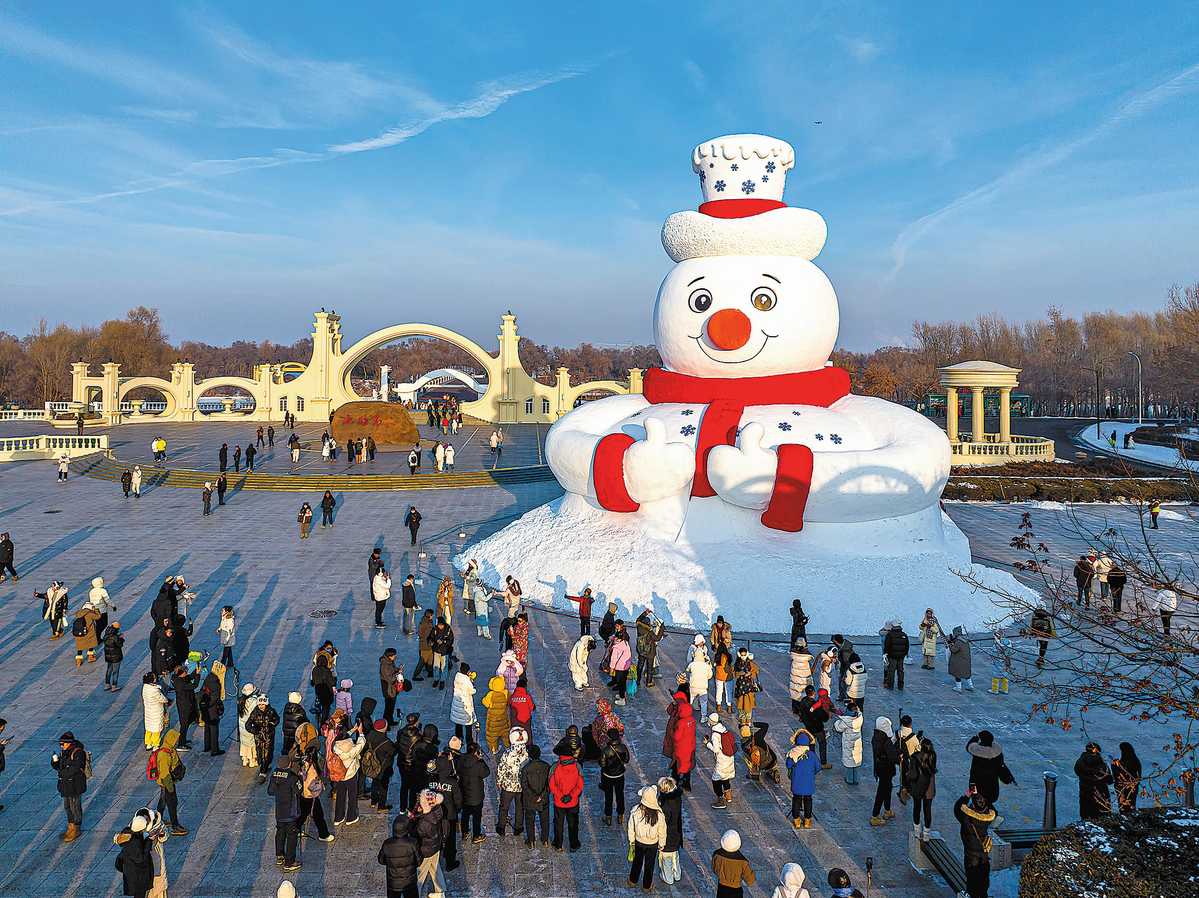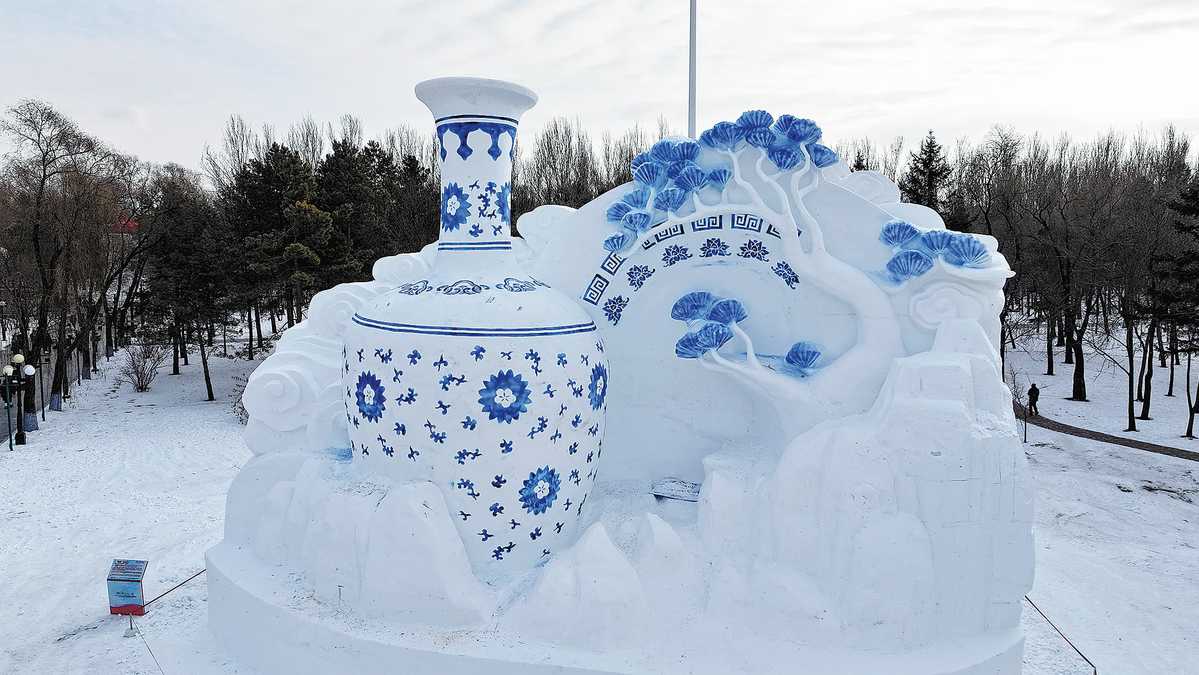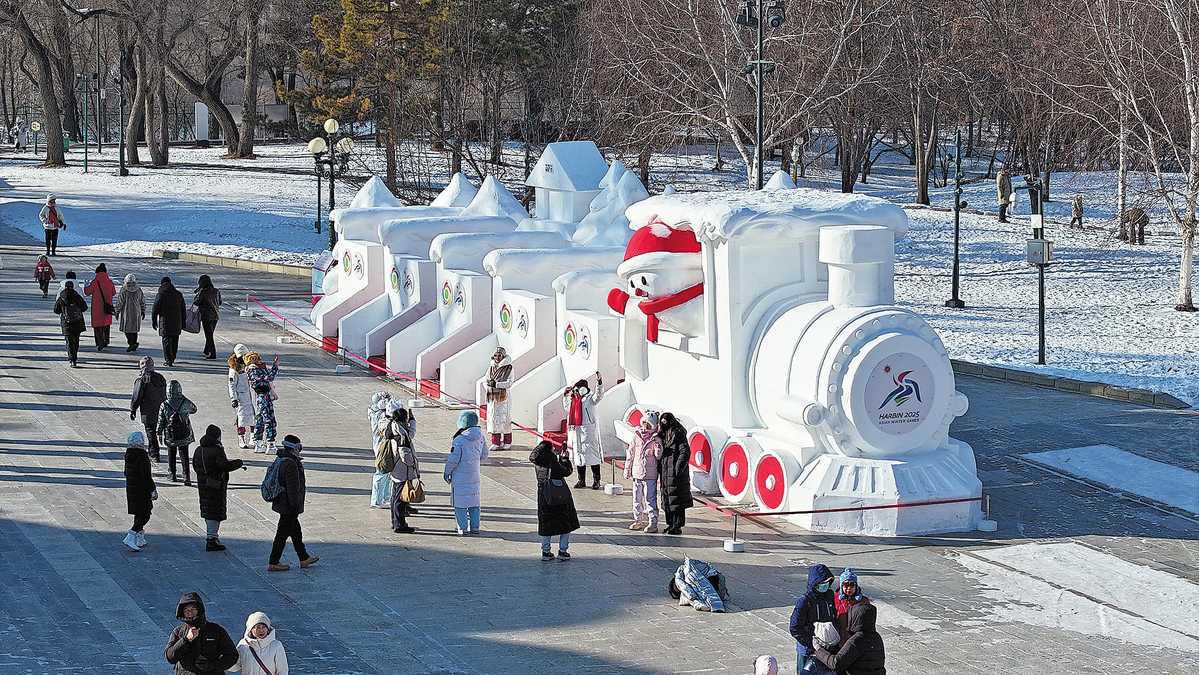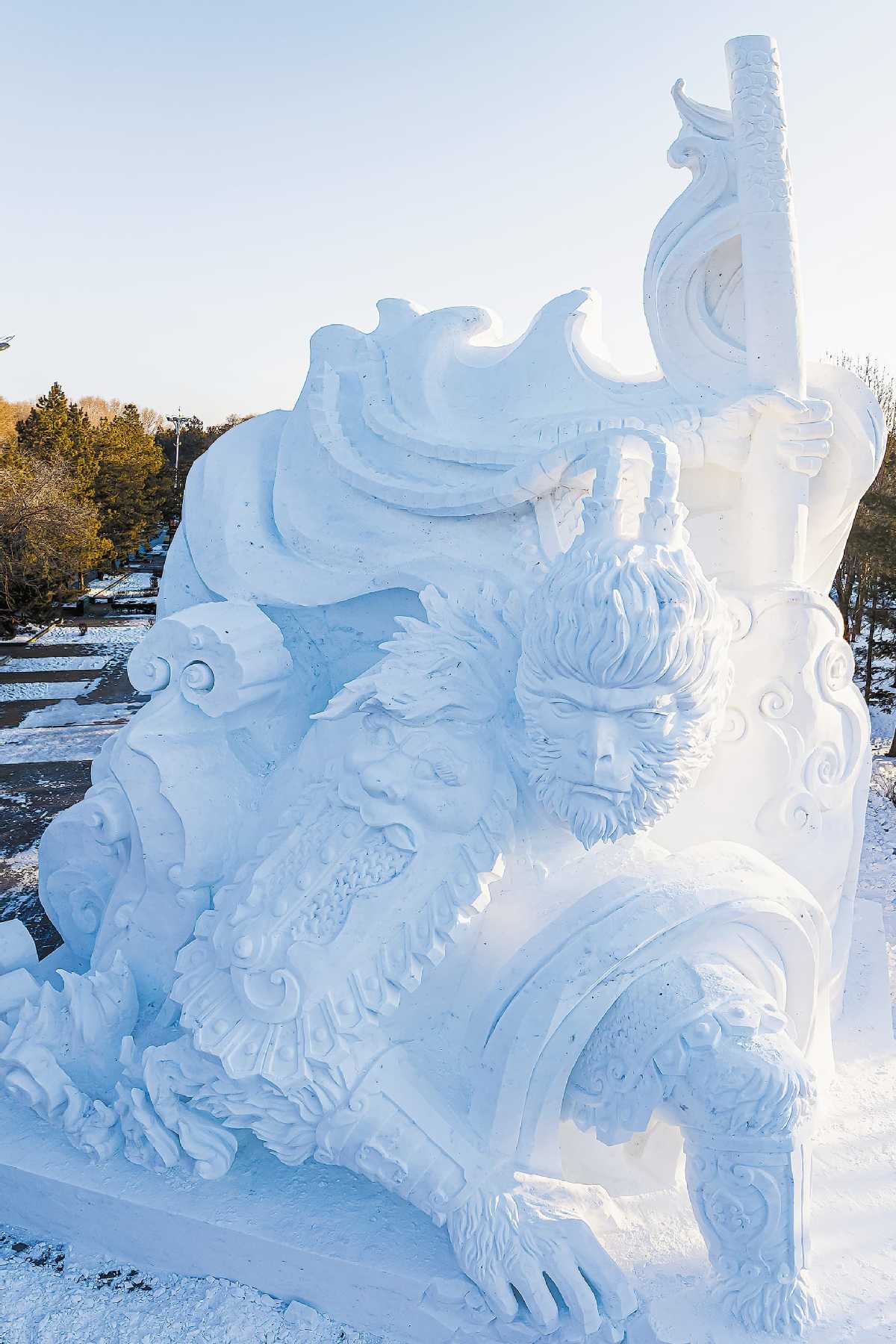
Wearing a red scarf and a smile, a giant snowman had been erected on Sun Island in Harbin, Heilongjiang province. PHOTO PROVIDED TO CHINA DAILY
Nestled in Northeast China's Heilongjiang province, Harbin transforms into a frosty wonderland every winter, drawing visitors from around the globe. The annual Harbin Sun Island International Snow Sculpture Art Expo is the pride of the snow town.
Within an area of 1.5 million square meters, the 37th edition is presenting more than 260 snow sculptures to tourists. A total of 150,000 cubic meters of snow have been used in the construction of the magnificent attraction.
Among all the sculptures, the 100-meter-long main snow sculpture has received the most attention since its debut in late December.

Amid a sea of snow, a sculpture resembling qinghua (patterns in cobalt blue on a white background) porcelain stands out. PHOTO PROVIDED TO CHINA DAILY
More than 80 sculptors spent eight days creating it, using 30,000 cubic meters of snow. The sculpture drew inspiration from the Chinese idiom bainiao chaofeng (hundreds of birds saluting the phoenix).
It features birds and plum blossoms as its core elements, conveying a deep longing for the beauty of spring, which aims to allow visitors to experience a unique springtime spectacle, full of harmony, hope and emotional richness within the icy winter landscape of the expo.
Another signature sculpture is a 20-meter-tall snowman, which embodies the warmth and generosity of the people of Harbin. It has a bright red scarf with a red carrot-shaped nose. With thumbs raised in a gesture of greeting, the snowman smiles to welcome visitors and locals alike.

Visitors to the island take photos next to a snow train sculpture. PHOTO PROVIDED TO CHINA DAILY
Another is the Return of the Monkey King, standing about 20 meters tall and formed of approximately 2,400 cubic meters of snow.
Based on the classic image of the Monkey King, the sculpture is meticulously carved to showcase a resolute and powerful figure. Every detail, carefully crafted by sculptors, conveys Sun Wukong's unwavering spirit and determination, evoking a sense of awe and admiration.
Through clever lighting and three-dimensional presentation, a magnificent and awe-inspiring atmosphere is created, as if the hero is about to leap out of the snow to vanquish demons.
Amid a sea of white sculptures, a qinghua (patterns in cobalt blue on a white background) porcelain snow sculpture, painted with vibrant colors, adds a unique touch to the park and is a popular spot for tourists to take photos.
The 14-meter-high sculpture employs a unique coloring technique to capture the elegance and purity of traditional blue and white porcelain, presenting its graceful and natural lines.

A sculpture depicting Sun Wukong, the Monkey King. PHOTO PROVIDED TO CHINA DAILY
To celebrate the 9th Asian Winter Games, sculptors created the Legendary Sacred Flame, which is adorned with a touch of red, adding a vibrant splash of color. It symbolizes light, hope, unity and the spirit of the games, showcasing the city's unique charm.
With its exquisite design and attention to detail, it conveys a deep love for winter sports and a yearning for peace. It not only pays tribute to the Games, but also serves as a fantastic opportunity to showcase Harbin's ice and snow culture to the world, welcoming visitors to experience the city's hospitality, vibrancy, and leave with fond memories of the Games.
During the expo, which runs until the end of February, organizers have also planned a series of innovative snow-related events in addition to the traditional snow carving competitions.
For example, one unique event — the parent-child snow carving activity — aims to enhance family cohesion.
Contact the writers at zhouhuiying@chinadaily.com.cn